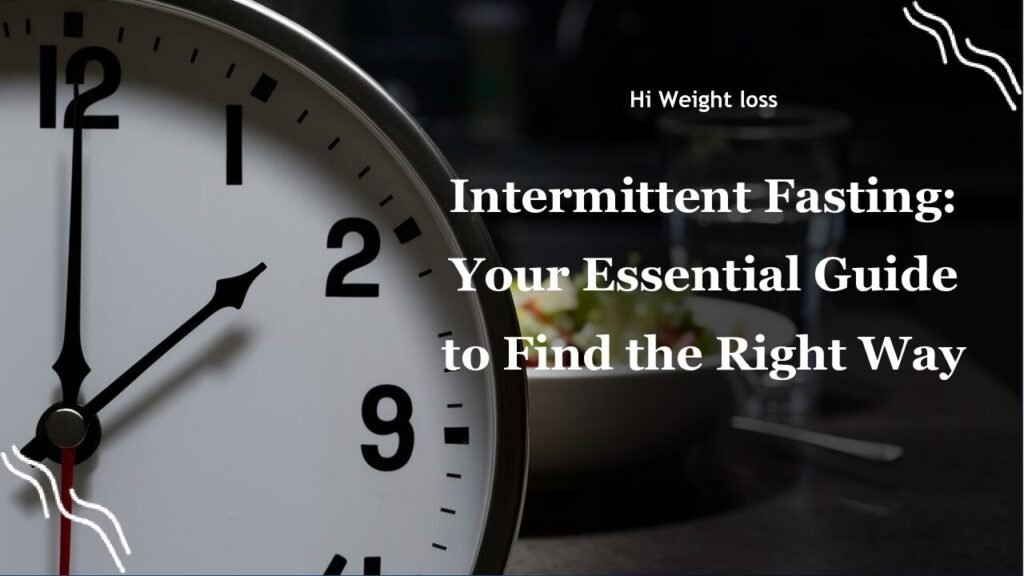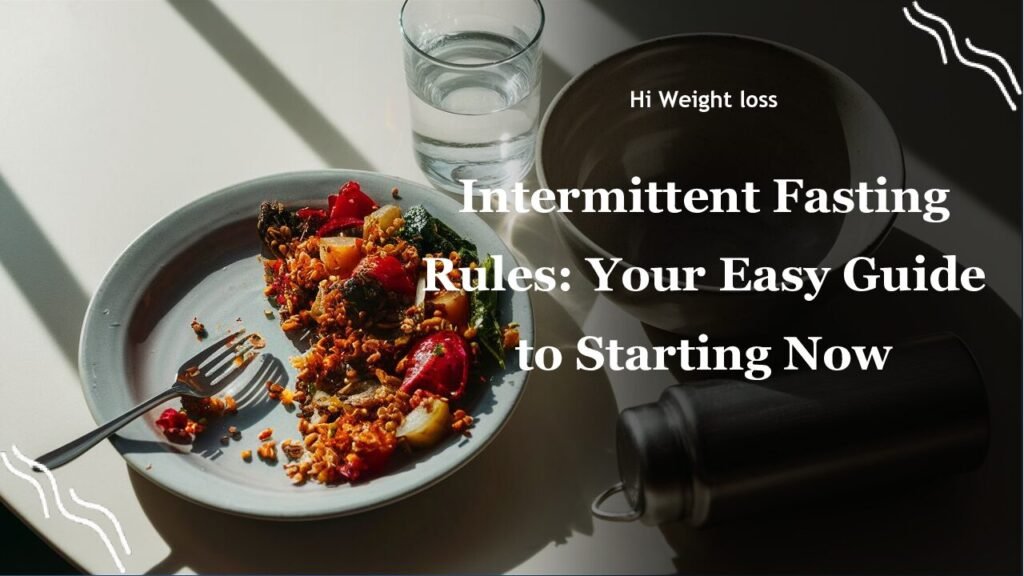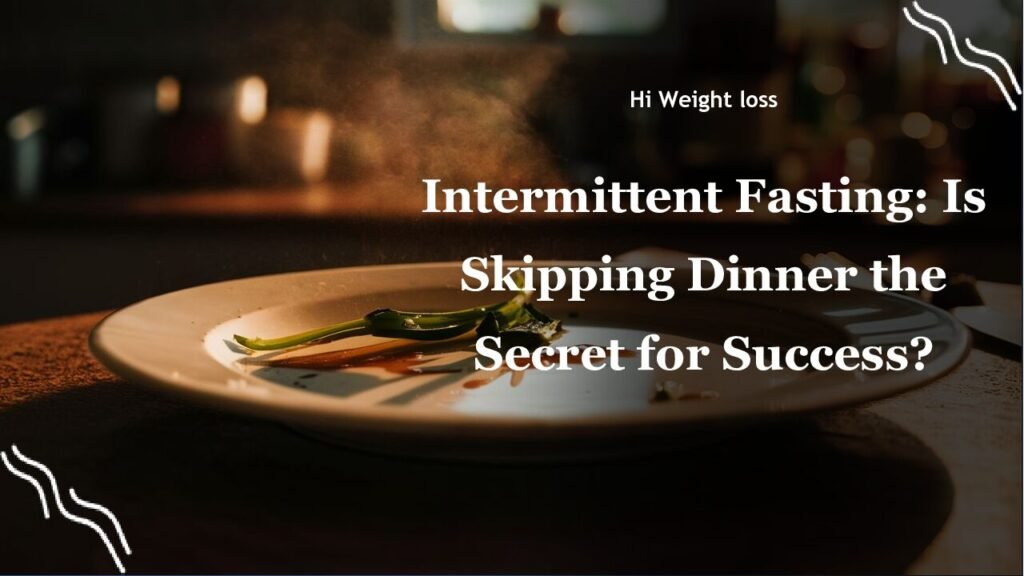“`
Feeling overwhelmed by the constant diet advice out there? It’s like everyone has a different opinion on the “best” way to eat, and you’re left wondering if there’s a simpler, healthier approach. I remember when I first started looking into intermittent fasting (IF); I was totally lost in the jargon. I tried a few things, felt terrible, and almost gave up. But I also knew that there were people having great success, so I dug deeper, and I’m here to help you navigate the complex world of IF so you can find what works for you. This article will explore the various methods of intermittent fasting, offering practical advice on how to start safely and effectively, and answer the question, *what is the correct way of intermittent fasting*?
Understanding Intermittent Fasting: What is the Correct Way of Intermittent Fasting?
Intermittent fasting isn’t a diet, but rather an eating pattern that cycles between periods of eating and voluntary fasting on a regular schedule. It’s not about *what* you eat but *when* you eat. You may have heard about it from a friend who’s lost weight, or perhaps you’re just curious about all the buzz. It’s important to approach IF with the correct information.
Popular Intermittent Fasting Methods
There are different ways to approach intermittent fasting. The right one for you will depend on your lifestyle, preferences, and health goals. Let’s explore some of the most common ones.
Alternate-Day Fasting
With alternate-day fasting, you eat normally on one day and then either completely fast or eat a very small meal (under 500 calories) the next day. This method can be challenging for beginners, but some find it effective. I know someone who tried this and found it extremely difficult, they ended up feeling very fatigued, and weren’t able to stick with it long term.
The 5:2 Diet
The 5:2 diet involves eating normally five days a week and restricting your calorie intake to 500-600 calories on the other two non-consecutive days. It is a popular method that many people find easier to follow than alternate-day fasting.
Daily Time-Restricted Feeding
This method is about choosing an eating window every day. A common example is an 8-hour eating window and a 16-hour fasting window. This means that you eat all your meals during those 8 hours, and abstain from food for the remaining 16. Many people find this easier to incorporate into their daily life.
The 16/8 Method
The 16/8 method, also known as the Leangains diet, involves fasting for 16 hours each day and eating only within an eight-hour window, such as from noon to 8 p.m. Many find it easy to integrate this type of fasting into their lifestyle.
How to Start Intermittent Fasting Safely
Ready to give it a try? Let’s look at some key steps to get started. It’s crucial to approach it thoughtfully to see success. It’s a lot about listening to your body and adjusting accordingly.
Choose the Right Method for You
Don’t rush into the most extreme method. Start with something easier, such as daily time-restricted fasting or the 16/8 method. It’s important to choose a method that fits your current lifestyle and schedule. You might find that the Mayo Clinic Health System, for example, explains different approaches that can be very helpful for beginners.
Start Slowly
If you are aiming for a 16-hour fast, maybe start with 12 hours and gradually increase it. You can try skipping breakfast initially, which is the easiest for some people.
Stay Hydrated
Water is vital during your fasting window. Remember that food also provides water, so it is extra important to make sure you’re taking in water when you’re not eating. You might find that a cup of unsweetened herbal tea helps to curb cravings as well.
Listen to Your Body
If you feel unwell, such as extremely dizzy, hungry, or irritable, stop and have a small meal. Don’t push yourself too hard. Intermittent fasting is not for everyone, and it’s okay if you need to adjust, or stop completely.
Consult a Healthcare Provider
Before starting any new diet or eating pattern, consult with your doctor. This is especially important if you have any existing health conditions or are taking medications. According to MDVIP, consulting with a healthcare provider is crucial.
Correct Way to Do 16/8 Intermittent Fasting
The 16/8 method is quite popular because it’s relatively easy to integrate into daily life. Here’s how to do it correctly, and make sure you’re getting the most out of it.
Choose Your Eating Window
Select an 8-hour window that works for you. For example, noon to 8 p.m. is common. Or, if you prefer, you could eat from 10 a.m. to 6 p.m. It’s really about aligning it with your social and work schedule. It is important that you stick to a consistent schedule to see optimal results.
Plan Your Meals
During your eating window, focus on eating healthy, balanced meals. This helps to ensure you are getting sufficient calories and nutrition for the day, particularly during the 8-hour eating window, and avoid overeating when breaking a fast.
Avoid Overeating
While you can eat what you want, it’s best to avoid excessive amounts of unhealthy foods. Try and eat slowly, and listen to your hunger cues. This will help you avoid overeating when you break a fast.
Be Consistent
Try to stick to your eating window as consistently as possible. However, don’t beat yourself up if you occasionally deviate. Just get back on track as soon as possible.
Adjust as Needed
If the noon to 8 p.m. window doesn’t work well for you, switch to an earlier or later window. The Hackensack Meridian Health website offers good information on flexibility in time-restricted fasting.

Key Considerations
Before you jump in, it’s essential to consider a few things to ensure that intermittent fasting is a safe and healthy choice for you. These tips can help avoid mistakes many beginners make.
Hydration is Key
Drinking enough water, herbal teas, or other non-caloric beverages, is essential. This will help you avoid dehydration and keep you feeling energetic.
Consult with a Professional
It’s advisable to consult with a healthcare provider, especially if you have health concerns, are pregnant, breastfeeding, or have had issues with disordered eating in the past. A doctor or dietitian can help assess your specific health needs and provide the guidance that you need.
Different Approaches for Different Needs
Remember that there are different approaches to intermittent fasting to cater to different needs and preferences. You should choose one that fits your lifestyle and health goals and do not just follow what others are doing.
| Method | Description | Pros | Cons |
|---|---|---|---|
| Alternate-Day Fasting | Eating normally one day, then fasting or severely restricting calories the next. | Potential for quick results. | Can be difficult to adhere to. May cause fatigue and mood swings. |
| 5:2 Diet | Eating normally five days, severely restricting calories two days. | Easier than alternate-day fasting for some. | Still may feel restrictive on fasting days. |
| Daily Time-Restricted Feeding | Eating within a specific daily window. | Flexible, generally easy to maintain. | Requires consistency with the timing. |
| 16/8 Method | Fasting for 16 hours, eating within an 8-hour window. | Popular and adaptable for many lifestyles. | May require adjusting meal timing. |
Conclusion
Intermittent fasting can be a powerful tool for improving your health, but it is not a magic bullet. It requires a clear understanding of the different methods, as well as a strategy for choosing the right one for your situation. Remember to start slowly, stay hydrated, listen to your body, and consult with a healthcare provider before you begin. In my personal experience, and from what I’ve seen with others, consistency is key, but you must be patient with yourself. It’s okay to experiment and find what works best for you. Just as I did, and many others have done, you will soon find a way to make intermittent fasting a healthy part of your life. So why not give it a try, and see where it can take you on your wellness journey? If you liked this article, share it with your friends, and let’s help others on their wellness journeys!
FAQ
Is intermittent fasting safe for everyone?
While it can be a good option for many people, it might not be suitable for everyone, especially those with certain health conditions, pregnant or breastfeeding women, or those with a history of eating disorders. Consulting with a healthcare provider is recommended.
How long does it take to see results from intermittent fasting?
The time it takes to see results varies. Some might notice benefits within a couple of weeks, while others might take longer. Consistency and patience are key.
Can I exercise while intermittent fasting?
Yes, you can. Many people find that they can exercise just fine when fasting. Listen to your body, start with lighter exercises, and adjust your routine as needed.
What can I drink during the fasting period?
You should stick to water, black coffee, and unsweetened tea. These don’t break your fast. Avoid anything with calories or artificial sweeteners.
Is intermittent fasting just for weight loss?
No, while weight loss is often a result, many people also report improved energy levels, better focus, and other health benefits.
“`



